Are you planning to give your kitchen cabinets a fresh new look? Choosing the right paint can make a big difference in how they turn out. With so many options available, it’s important to understand the differences between chalk paint vs. latex paint vs. regular paint.
Chalk paint is known for its rustic and matte finish, while latex paint offers a smooth and durable surface. Regular paint, often oil-based, provides a traditional and glossy look. Each type has its unique qualities that can transform your cabinets in different ways.
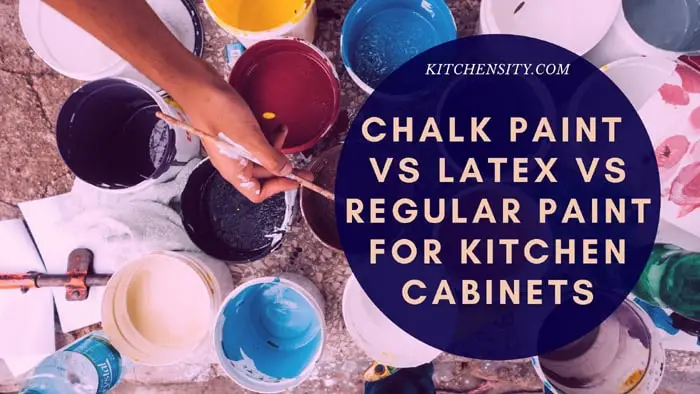
Table of Contents
- 1 Comparison Table – Chalk Paint Vs Latex Vs Regular Paint.
- 2 What Is A Chalk Paint?
- 3 What Is A Latex Paint?
- 4 What Is A Regular Paint (Oil-Based)?
- 5 Can You Paint Over Chalk Paint With Regular Paint?
- 6 Durability And Maintenance Of Kitchen Cabinet Paints.
- 7 Cost Considerations For Kitchen Cabinet Paints
- 8 Can You Mix Latex Paint With Chalk Paint?
- 9 Final Thoughts On The Best Paint For Kitchen Cabinets.
- 10 FAQs (Frequently Asked Questions).
- 10.1 Is Chalk Paint Better Than Regular Paint For Cabinets?
- 10.2 Is Chalk Paint Suitable For Kitchen Cabinets?
- 10.3 Is Chalk Paint More Durable Than Latex?
- 10.4 How Long Does Latex Paint Last On Cabinets?
- 10.5 Does Regular Paint Work On Kitchen Cabinets?
- 10.6 What Kind Of Paint Is Most Durable For Kitchen Cabinets?
Comparison Table – Chalk Paint Vs Latex Vs Regular Paint.
Here’s a comparison table that highlights the key features of chalk paint, latex paint, and regular paint for kitchen cabinets.
| Paint Type | Preparation Required | Drying Time | Durability | Cleaning | Finish Options | Cost |
|---|---|---|---|---|---|---|
| Chalk Paint | Minimal preparation (except for smooth surfaces). | Fast drying. | Not as durable, prone to chipping. | Easy cleaning with soap and water. | Matte finish can be sealed with wax. | Higher cost. |
| Latex Paint | Requires extensive preparation (sanding, cleaning, priming). | Fast drying. | Moderately durable, doesn’t chip easily. | Easy cleaning with soapy water. | Various finish options (glossy, semi-gloss, flat). | Budget-friendly. |
| Regular Paint (Oil-based) | Requires sanding and cleaning before painting. | Slow drying (up to 24 hours). | Highly durable. | Requires mineral spirits for cleaning. | Smooth finish, glossy appearance. | Moderately priced. |
Now, let’s learn about paints.
Also Read – How To Repair Chipped Paint On Kitchen Cabinets?
What Is A Chalk Paint?
Chalk Paint is a water-based paint formulated to eliminate the need for sanding or priming before application. This feature streamlines the painting process, sparing users with the preparatory labor typically associated with painting cabinets. Developed and patented by Annie Sloan, Chalk Paint is a versatile decorative paint ideal for cabinets, furniture, walls, and metals. Its versatility extends to various surfaces such as wood, metal, melamine, and even glass. Users can also utilize it to dye fabric or refresh floors, making it a convenient and multifunctional painting solution.
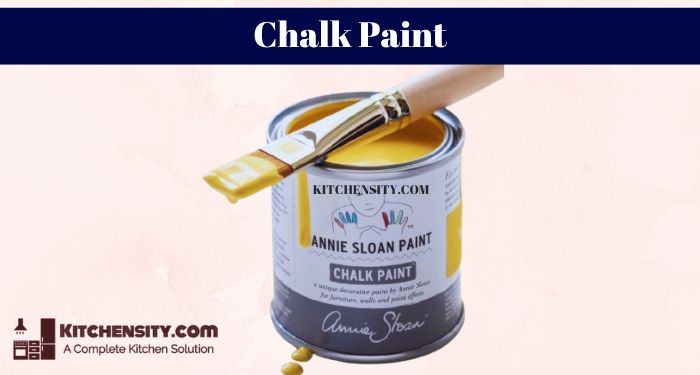
PROS
- Chalk paint requires minimal preparation; simply clean the surface before application.
- It often does not require priming.
- Chalk paint dries quickly, allowing for a second coat to be applied within an hour.
- Its thick consistency often necessitates fewer coats.
- It provides a smoother finish when sanded.
- It can effectively conceal heavily-grained wood.
- The application of a wax topcoat results in a perfect matte sheen.
CONS
- Prone to chipping, leading to reduced durability.
- Chalk paint requires sanding after painting, resulting in the dispersion of super-fine dust particles.
- Higher cost compared to latex and regular paints.
- Tendency to yellow over time, necessitating a water-based sealer such as a polycrylic wood finish.
Chalk Paint Application Tips.
- Clean the surface thoroughly with a cloth before painting to ensure proper adhesion.
- Use soap and water to clean brushes and rollers, as chalk paint is water-based.
- For a smooth finish, sand the cabinets after painting.
- Seal the paint with wax to protect it. Apply two coats for a matte sheen.
- To prevent yellowing over time, consider using a water-based sealer like Polycrylic Wood Finish.
- Keep in mind that chalk paint is not as durable as other paints and may chip easily.
Also Read – Can You Put Kitchen Cabinets On Top Of Vinyl Plank Flooring?
What Is A Latex Paint?
Latex paint is a type of water-based paint that contains acrylic plastic resin, making it adhere well to surfaces. It is available in various finishes, such as glossy, semi-gloss, and flat. Latex paint is commonly used for painting wooden furniture or cabinets due to its ease of use. However, preparing surfaces for latex paint can be labor-intensive, requiring thorough sanding, cleaning, and priming to ensure good adhesion.
Latex paint has a significant advantage over oil-based paint: it’s less likely to show brush strokes. It goes on smoother and smoother after applying 2 to 3 coats.
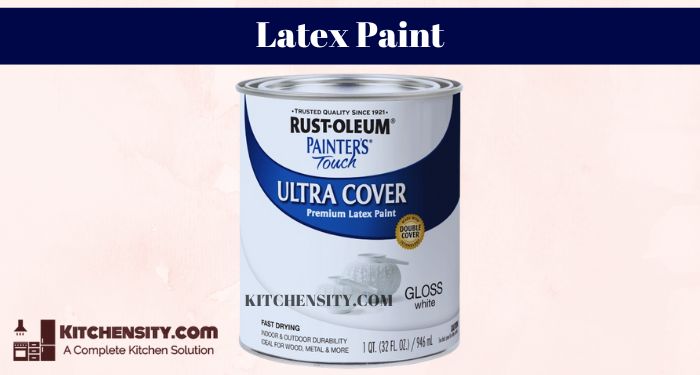
PROS
- Latex paint dries up much faster than regular paint.
- It doesn’t get yellowish over time.
- Cleaning is easy and convenient.
- It is easy to achieve the required sheen level due to the availability of different finishes.
- Latex paint is also available in different colors.
- It doesn’t chip off and is cheaper than chalk paint.
CONS
- Stains penetrate latex paint more easily than oil-based, which makes more frequent refinishing necessary.
- It requires lots of sanding and cleaning before painting for good adhesion.
Also Read – How To Draft-Proof Your Under Kitchen Cabinets?
Latex Paint Application Tips.
- Ensure the surface is clean and free of dust or debris before painting.
- Consider using a primer before painting to improve adhesion and coverage.
- Use a high-quality brush or roller to apply the paint for a smooth finish.
- Stir the paint thoroughly before application to ensure an even consistency.
- Apply paint in thin, even coats to avoid drips and ensure proper coverage.
- Allow each coat to dry completely before applying the next coat.
- Use painter’s tape to mask off areas you don’t want to paint.
- Clean up any spills or drips immediately with a damp cloth.
- Allow the paint to cure fully before subjecting it to heavy use or cleaning.
Also Read – How To Stop A Draught From Behind Kitchen Cupboards?
What Is A Regular Paint (Oil-Based)?
Regular paint, often called oil paint, is commonly used for various surfaces, including kitchen cabinets. It is typically made with a base of natural oils like linseed or synthetic oils. Because of its oil content, it has a smooth texture and can only be thinned or cleaned with mineral spirits such as turpentine. Regular paint adheres well to surfaces, provides a high level of durability, and offers a glossy finish. However, it requires thorough sanding and cleaning before painting for optimal adhesion.
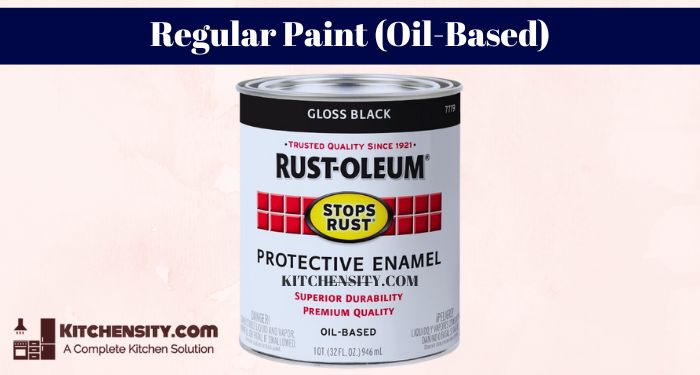
PROS
- Regular paint has a superior finish when painted with a brush or sprayer; brush strokes are less visible compared to latex or chalk paint.
- Durable and strong, providing long-lasting results.
- It can be applied to various surfaces, including stained, chalky, or dirty.
- Requires fewer coats than latex and chalk paints to achieve a smooth finish.
- Available in different sheen grades, offering versatility in finish options.
- It is more resistant to low temperatures than latex paint.
- Regular paint covers slightly damaged areas well and offers a richer color compared to chalk and latex paint.
CONS
- It is not easy to clean and requires mineral spirits like turpentine or thinner for brush cleanup.
- Regular paint leaves a strong odor after painting, which can be irritating and flammable.
- Long drying time, typically 24 hours.
- Colors may fade or yellow over time.
- Requires sanding and priming before painting, adding to the preparation time.
Also Read – Why Are My Kitchen Cupboards So Cold?
Regular Paint (Oil-based) Application Tips.
- Ensure the surface is clean, dry, and dust-free before painting.
- Consider using a primer before painting to improve adhesion and coverage.
- Use a high-quality brush or sprayer for application to achieve a superior finish.
- Thinning may be necessary before painting; follow the manufacturer’s instructions for the correct solvent to use.
- Stir the paint thoroughly before application to ensure an even consistency.
- Apply paint in thin, even coats to avoid drips and ensure proper coverage.
- Allow each coat to dry completely before applying the next coat.
- Use adequate ventilation when painting with oil-based paint, as it emits strong fumes.
- Clean up spills or drips immediately with mineral spirits or turpentine.
- Allow the paint to cure fully before subjecting it to heavy use or cleaning.
Also Read – Best Insulation for Under Kitchen Units
Can You Paint Over Chalk Paint With Regular Paint?
Yes, you can paint over chalk paint with regular paint. But, it’s important to properly prepare the surface before applying the new paint. This typically involves cleaning the surface to remove any dirt or wax, lightly sanding to create a smooth surface, and applying a primer to ensure good adhesion of the new paint. Once the surface is properly prepared, you can apply the regular paint as you normally would.
It’s important to note that when you paint over chalk paint with regular paint, you will be altering the appearance and characteristics of the surface. The unique matte, textured, or distressed look that chalk paint provides may be covered up by the regular paint, resulting in a more traditional finish. Therefore, it’s advisable to consider your desired outcome and perform a small test in an inconspicuous area before proceeding with the entire surface.
Also Read – How to Insulate Under Kitchen Cabinets?
Durability And Maintenance Of Kitchen Cabinet Paints.
The durability and maintenance of kitchen cabinet paints depend on the type of paint used.
- Latex Paint: Latex paint is durable and can withstand regular wear and tear in a kitchen. It is relatively easy to clean with soap and water. However, harsh chemicals should be avoided as they can damage the paint finish.
- Chalk Paint: Chalk paint is less durable than latex paint and may require more frequent touch-ups in high-traffic areas. Cleaning chalk paint is easy, but it requires a protective wax or sealer to prevent chipping and staining. Regular reapplication of wax or sealer may be necessary.
- Oil-based Paint: Oil-based paint is highly durable and can withstand heavy use in a kitchen. Cleaning oil-based paint can be challenging, as it requires mineral spirits for cleanup. It is also prone to yellowing over time, so regular maintenance is necessary to maintain its appearance.
Some General Maintenance Tips.
- Use mild soap and water for regular cleaning.
- Avoid abrasive cleaners or scrubbers that can damage the paint finish.
- Consider applying a protective topcoat or sealer for added durability.
- Address any chips or scratches promptly to prevent further damage.
Also Read – Effective Ways To Update Old Kitchen Cabinets [Under $100]
Cost Considerations For Kitchen Cabinet Paints
| Chalk Paint | Latex Paint | Regular Paint (Oil-Based) | |
|---|---|---|---|
| Cost per Square Foot | Relatively expensive, $15-$30 per quart. | More affordable, $20-$40 per gallon. | Moderately priced, $25-$45 per gallon. |
| Cost per Cabinet | $40-$100. | $30-$80. | $30-$80. |
| Additional Expenses | Minimal. | Primer: $15-$25 per gallon, Sealer: $20-$40 per gallon, Brushes: $5-$20 each. | Primer: $15-$30 per gallon, Sealer: $20-$40 per gallon, Brushes: $5-$30 each. |
When considering the cost of painting kitchen cabinets, it’s essential to account for both the paint and additional expenses such as primers, sealers, and brushes. While chalk paint may have a higher upfront cost, it may require fewer additional supplies. On the other hand, latex paint and regular paint may have a lower initial cost but may involve additional expenses for primers, sealers, and brushes.
So the overall cost will depend on the size of your kitchen cabinets, the paint’s quality and additional supplies, and whether you opt for professional labor or undertake the painting project yourself.
Also Read – How To Fix Scratched Kitchen Cabinets?
Can You Mix Latex Paint With Chalk Paint?
Yes, you can mix latex paint with chalk paint to create a custom color or to adjust the properties of the paint. However, there are a few things to remember when mixing these two types of paint.
- Consistency: Latex paint is thinner than chalk paint, so mixing them may result in a thinner consistency. You may need to add a thicker medium, such as a chalk paint additive or thickening agent, to achieve the desired consistency.
- Coverage and Finish: Mixing latex paint with chalk paint may affect the coverage and finish of the paint. Doing a small test batch first is advisable to see how the mixed paint behaves before applying it to a larger area.
- Adhesion and Durability: Mixing latex paint with chalk paint may affect the adhesion and durability of the paint. It’s recommended to use a bonding primer before applying the mixed paint to ensure proper adhesion to the surface.
Instead of mixing latex paint and chalk paint, consider using tinting options available for each type of paint to achieve the desired color. This way, you can maintain the integrity and performance of each paint type while achieving your desired aesthetic.
Also Read – Refacing Kitchen Cabinets: An Ultimate DIY Guide
Final Thoughts On The Best Paint For Kitchen Cabinets.
When choosing the best paint for kitchen cabinets, consider factors such as durability, ease of application, and desired finish. Latex paint is a popular choice for its durability and easy maintenance, while chalk paint offers a unique matte finish but may require more frequent touch-ups. Oil-based paint is highly durable but requires more effort for cleanup and maintenance. Ultimately, the best paint for your kitchen cabinets depends on your preferences and needs.
Here are some recommendations for different scenarios:
- Chalk paint is an excellent choice for a vintage or distressed look with minimal surface preparation. It provides a unique finish and allows for creative techniques.
- Latex paint is recommended for durability, ease of use, and affordability. It offers a smooth finish, a wide color range, and easy cleanup.
- Regular paint, specifically oil-based paint, is suitable for maximum durability and a traditional finish. It provides exceptional longevity and resistance to wear and moisture.
Also Read – Is Murphy Oil Soap Good For Kitchen Cabinets?
FAQs (Frequently Asked Questions).
-
Is Chalk Paint Better Than Regular Paint For Cabinets?
No, chalk paint is not inherently better than regular paint for cabinets. The choice between the two depends on factors such as desired finish, durability, and ease of application.
-
Is Chalk Paint Suitable For Kitchen Cabinets?
Yes, chalk paint is suitable for kitchen cabinets. It is designed especially for wooden cabinets and it is much easy to use. You don’t need sanding or priming before painting.
-
Is Chalk Paint More Durable Than Latex?
Chalk paint and latex are from the same family water-based, so their durability is almost the same. But in chalk paint, you have to use a sealer to protect it and make it durable. Without sealing, chalk paint is less durable than latex.
-
How Long Does Latex Paint Last On Cabinets?
Latex paint can last for many years on cabinets if properly applied and maintained. Factors such as the paint’s quality, surface preparation, and level of wear and tear can affect its longevity. Latex paint on cabinets can last 5-10 years or more with proper care and maintenance.
-
Does Regular Paint Work On Kitchen Cabinets?
Yes, regular oil-based paints work great on kitchen cabinets. Sand and clean the cabinets properly for the paint to adhere perfectly. It will have a much smoother finish and fewer brush strokes.
-
What Kind Of Paint Is Most Durable For Kitchen Cabinets?
Synthetic enamel (alkyd) oil paints are more durable than latex or chalk paint. They require time to be fully cured but once finished, they provide a harder, more durable finish.
Katrina Smith is a seasoned expert with over 25 years of experience in all things related to cooking and the kitchen. As an avid cook and kitchen enthusiast, she is passionate about sharing her knowledge and expertise on cookware, kitchen appliances, kitchen tips, and kitchen staples.
Through her articles and reviews, Katrina aims to inspire and help others improve their cooking skills, experiment with different ingredients, and invest in quality cookware and appliances.

![3 Effective Ways To Update Old Kitchen Cabinets [Under $100] 6 How To Update Old Kitche Cabinets](https://www.kitchensity.com/wp-content/uploads/2021/05/How-To-Update-Old-Kitche-Cabinets.jpg)
![Refacing Kitchen Cabinets: An Ultimate DIY Guide [2023] 7 Refacing Kitchen Cabinets](https://www.kitchensity.com/wp-content/uploads/2021/05/Refacing-Kitchen-Cabinets.jpg)
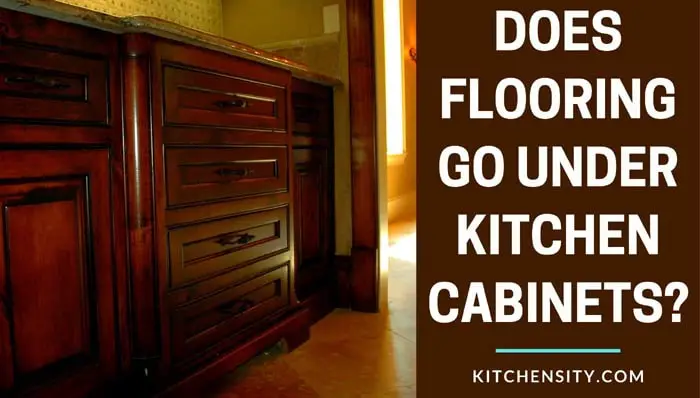
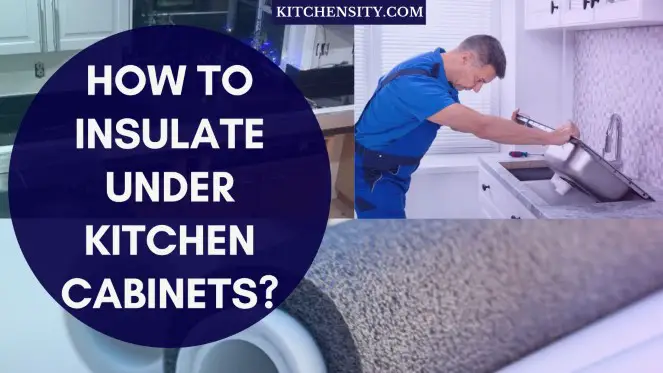
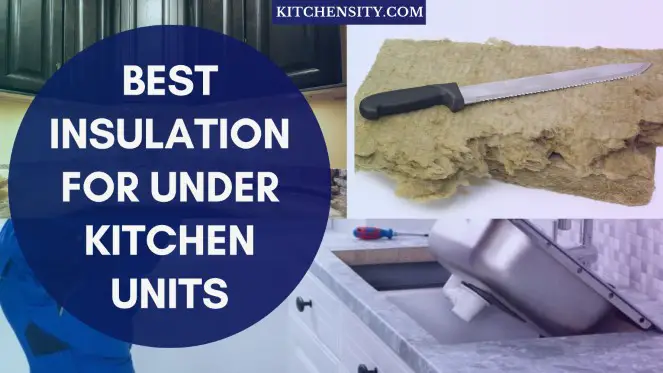
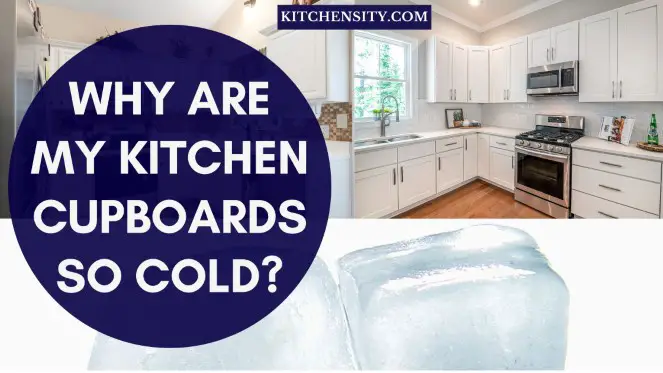
Appreciate the recommendation. Let me try it out.
I’ve been contemplating painting my kitchen cabinets, but I wasn’t sure which type of paint to use. Your comparison of chalk paint, latex paint, and regular paint was exactly what I needed. I now have a better understanding of the pros and cons of each type of paint and feel more confident about choosing the right one for my cabinets. Thanks for helping!
Hi Lewis, I’am so glad to hear that this article helped you make an informed decision about painting your kitchen cabinets! If you have any more questions or need further assistance with your project, please don’t hesitate to reach out.